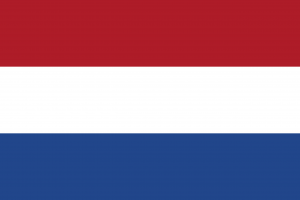Language/Dutch/Grammar/Plural-and-Diminutives
 Հայերէն
Հայերէն Български език
Български език 官话
官话 官話
官話 Hrvatski jezik
Hrvatski jezik Český jazyk
Český jazyk English
English Suomen kieli
Suomen kieli Français
Français Deutsch
Deutsch עברית
עברית हिन्दी
हिन्दी Magyar
Magyar Bahasa Indonesia
Bahasa Indonesia فارسی
فارسی Italiano
Italiano 日本語
日本語 Қазақ тілі
Қазақ тілі 한국어
한국어 Lietuvių kalba
Lietuvių kalba Νέα Ελληνικά
Νέα Ελληνικά Şimali Azərbaycanlılar
Şimali Azərbaycanlılar Język polski
Język polski Português
Português Limba Română
Limba Română Русский язык
Русский язык Српски
Српски Español
Español العربية القياسية
العربية القياسية Svenska
Svenska Wikang Tagalog
Wikang Tagalog தமிழ்
தமிழ் ภาษาไทย
ภาษาไทย Türkçe
Türkçe Українська мова
Українська мова Urdu
Urdu Tiếng Việt
Tiếng Việt
| ◀️ Gender and Articles — Previous Lesson | Next Lesson — Present Tense and Regular Verbs ▶️ |
As a Dutch language teacher for over 20 years, I've learned that one of the trickiest aspects of Dutch grammar for beginners is forming plurals and diminutives in Dutch nouns. But fear not, with a little practice and some interesting cultural information, you'll be making plurals and diminutives like a native in no time!
With the completion of this lesson, consider investigating these related pages: Modal Verbs & Ablative Case in Dutch.
Forming Plurals[edit | edit source]
In Dutch, there are three main ways to form plurals: adding -en, -s, or -eren to the singular noun. The most common way is to add -en to the singular noun, but there are some exceptions. Here are some examples:
| Dutch | Pronunciation | English |
|---|---|---|
| huis (house) | /hœys/ | houses |
| meisje (girl) | /may-zhuh/ | girls |
| vogel (bird) | /voh-ghul/ | birds |
| auto (car) | /ahw-toh/ | cars |
Note that if the singular noun ends in -s, -x, -z, -ch, or -sh, you add -en to the end of the word, rather than just -s. So, for example, the plural of klas (class) is klassen, not klass.
Some nouns that end in -er or -el also require an extra -e before adding -en to form the plural, such as fiets (bike) which becomes fietsen in the plural.
There are also some nouns that have irregular plural forms. Here are a few examples:
| Dutch | Pronunciation | English |
|---|---|---|
| kind (child) | /khint/ | children |
| man (man) | /mahn/ | men |
| vrouw (woman) | /frow/ | women |
| stad (city) | /staht/ | cities |
While memorizing irregular plurals may seem daunting, just remember that practice makes perfect!
Forming Diminutives[edit | edit source]
In Dutch, a diminutive is formed by adding -je, -tje, -pje or -kje to the singular noun. A diminutive usually implies a smaller or cuter version of the original. For example, the word hond (dog) becomes hondje (puppy).
| Dutch | Pronunciation | English |
|---|---|---|
| meisje (girl) | /may-zhuh/ | girltje (little girl) |
| boek (book) | /buke/ | boekje (little book) |
| ding (thing) | /ding/ | dingetje (little thing) |
There are some exceptions, such as huis (house), which becomes huisje (little house) rather than huispje. Additionally, some nouns have irregular diminutive forms, such as man (man), which becomes mannetje (little man).
It's important to note that while the diminutive is often used to make a word sound cuter, it can also be used to express familiarity, intimacy or even scorn.
Cultural Insight[edit | edit source]
Language and culture go hand in hand, and Dutch is no exception. Did you know that the Dutch have a love for diminutives and often use them in everyday language? For example, instead of asking for a kopje (cup) of coffee, a Dutch person might ask for a kopje koffie (little cup of coffee). This can also be seen in Dutch nicknames, such as Pietje (little Peter) or Keesje (little Kees).
Learning about cultural insights can make learning a language even more fun and interesting!
Tips[edit | edit source]
- Practice, practice, practice!
- Pay attention to the gender of the noun, as this will affect how the plural or diminutive is formed.
- Don't worry too much about memorizing irregular plurals and diminutives - with practice, they'll become second nature!
Sources[edit | edit source]
Videos[edit | edit source]
The Plural in Dutch ! How to form it ??? - YouTube[edit | edit source]
Other Lessons[edit | edit source]
- Gender and Articles
- Present Tense and Regular Verbs
- Indefinite Articles in Dutch
- Ordinal Numbers in Dutch
- How to use “to be” with names and places
- Modal Verbs
- How to use “there to be” in Dutch
- The Nominative Case in Dutch
- Negation
- Questions
| ◀️ Gender and Articles — Previous Lesson | Next Lesson — Present Tense and Regular Verbs ▶️ |

